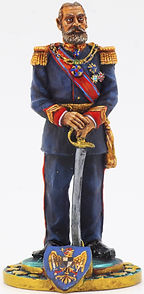top of page


Kingdom of Romania

Nothing without God

The 1859 ascendancy of Alexandru Ioan Cuza as prince of both Moldavia and Wallachia under the nominal suzerainty of the Ottoman Empire united an identifiably Romanian nation under a single ruler. In 1862, the two principalities were formally united to form the Principality of Romania, with Bucharest as its capital. For more than a decade after the formal union of the two principalities, Romania was still nominally a vassal of the Ottoman Empire. However, this was increasingly a legal fiction. Romania had its own flag and anthem, and from 1867 had its own currency as well. Following the Russo-Turkish War of 1877–1878, Romania was recognized as an independent state by the Treaty of Berlin, 1878 and acquired Dobruja, although it was forced to surrender southern Bessarabia (Budjak) to Russia. On 15 March 1881, as an assertion of full sovereignty, the Romanian parliament raised the country to the status of a kingdom, and Carol was crowned king on 10 May. The new state, squeezed between the Ottoman, Austro-Hungarian, and Russian Empires, with Slavic populations on its southwestern, southern, and northeastern borders, the Black Sea due east, and Hungarian neighbours on its western and northwestern borders, looked to the West, particularly France, for its cultural, educational, and administrative models.
bottom of page



